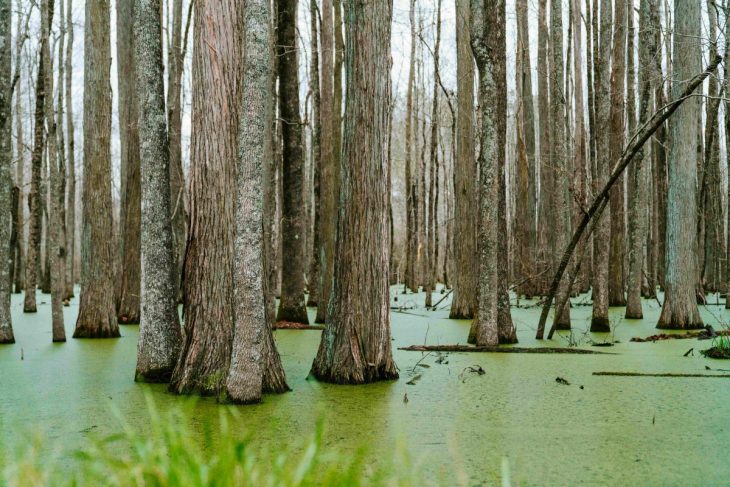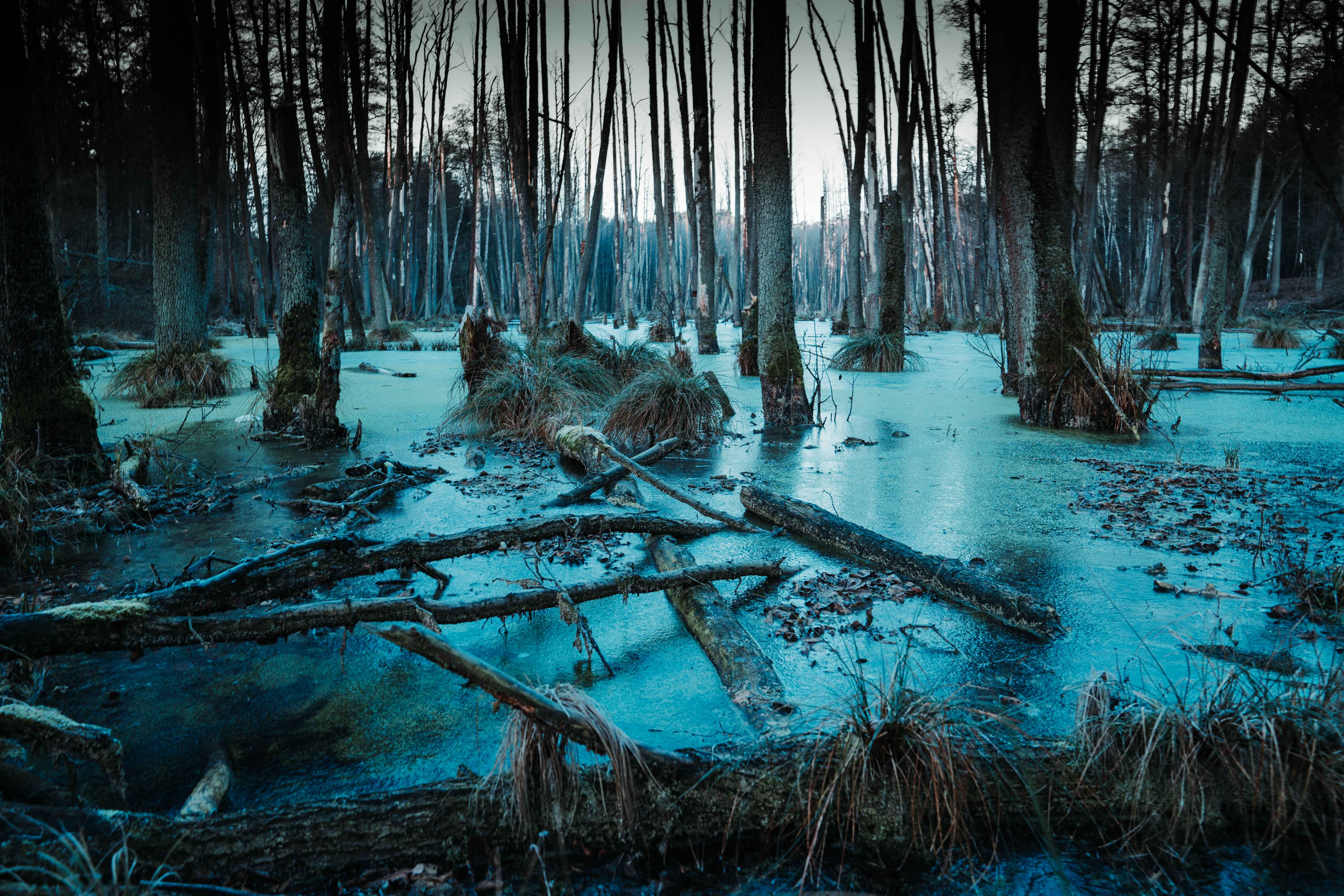
Swamps are fascinating ecosystems that are often shrouded in mystery and intrigue. These wetland areas are teeming with unique plant and animal life, creating a delicate balance between land and water. In this article, we will dive into 18 interesting facts about swamps, uncovering their significance, biodiversity, and ecological importance. So, put on your boots, and let’s explore the enchanting world of swamps!
What is a Swamp?
A swamp is a type of wetland characterized by standing water and dominated by trees, shrubs, and other vegetation. Unlike marshes, which are primarily covered with grasses and reeds, swamps are filled with woody plants and trees that thrive in the waterlogged environment.
Swamp Distribution
Swamps can be found all over the world, although they are more commonly associated with tropical and subtropical regions. Some famous swamps include the Everglades in Florida, the Okavango Delta in Botswana, and the Sundarbans in Bangladesh and India.
Wetland Diversity
Swamps are incredibly diverse ecosystems that support a wide range of plant and animal species. They serve as important habitats for numerous species, including birds, reptiles, amphibians, and mammals. The unique combination of water and vegetation in swamps creates a dynamic environment that sustains a rich biodiversity.
Plant Life in Swamps
Swamps are home to a variety of plant species that have adapted to the wet conditions. Examples of common plants found in swamps include cypress trees, mangroves, water lilies, ferns, and mosses. These plants play a crucial role in maintaining the health and stability of the swamp ecosystem.
Wildlife in Swamps
Swamps are havens for wildlife, providing food, shelter, and breeding grounds for a wide range of species. They are particularly important for migratory birds, which rely on swamps as stopover points during their long journeys. Animals commonly found in swamps include alligators, turtles, snakes, frogs, otters, and numerous species of fish.

Wetland Benefits
Swamps offer numerous benefits to both the environment and human populations. They act as natural water filters, purifying water and improving its quality. Swamps also help regulate water flow, reducing the risk of floods and providing a steady water supply during dry periods.
Carbon Storage
Swamps are excellent carbon sinks, meaning they absorb and store large amounts of carbon dioxide from the atmosphere. The vegetation in swamps absorbs carbon dioxide during photosynthesis, helping to mitigate climate change by reducing greenhouse gas emissions.
Medicinal Plants
Many swamps are home to unique plant species that have medicinal properties. Traditional healers and indigenous communities have long relied on these plants for their healing properties, using them to treat various ailments and diseases.
Cultural Significance
Swamps hold cultural significance for many communities around the world. They often feature in folklore, myths, and traditional stories, symbolizing mystery, resilience, and the connection between land and water.
Threats to Swamps
Unfortunately, swamps are under threat from various human activities. Drainage for agriculture, urban development, pollution, and climate change poses significant risks to these fragile ecosystems. It is essential to protect and conserve swamps to preserve their ecological value.
Restoration Efforts
Efforts are underway to restore and conserve swamps worldwide. Wetland restoration projects aim to recreate or rehabilitate degraded swamp ecosystems, providing a habitat for endangered species, improving water quality, and promoting sustainable land management practices.
Ecotourism and Education
Swamps offer unique opportunities for ecotourism and environmental education. Guided tours and educational programs allow visitors to learn about the ecological importance of swamps, experience their beauty, and understand the need for their protection.
Wetland Regulations
To ensure the conservation of swamps, many countries have implemented regulations and policies to protect these valuable ecosystems. These measures aim to prevent further degradation and promote sustainable use of wetland resources.

The Role of Swamps in Water Cycle
Swamps play a crucial role in the water cycle by absorbing and storing water. They act as natural sponges, absorbing rainfall and gradually releasing it into surrounding water bodies, preventing runoff and reducing the risk of flooding.
Wetland Restoration Benefits
Restoring damaged or degraded swamps can have numerous benefits. It helps to improve water quality, enhance biodiversity, protect against erosion, and provide valuable habitats for endangered species.
Swamps and Climate Change
Swamps are intricately linked to climate change. As mentioned earlier, they store large amounts of carbon dioxide, helping to mitigate the impacts of greenhouse gas emissions. However, climate change can also negatively affect swamps, leading to increased flooding, altered rainfall patterns, and loss of habitat.
The Role of Swamps in Flood Control
Swamps act as natural buffers against flooding. They can absorb excess water during heavy rainfall, reducing the risk of downstream flooding. By preserving and restoring swamps, we can help protect communities living in flood-prone areas.
Conservation Efforts
Conservation organizations and government agencies play a vital role in protecting and conserving swamps. Through research, advocacy, and on-the-ground initiatives, these entities work to safeguard these unique ecosystems for future generations.
Conclusion
In conclusion, swamps are captivating ecosystems that play a vital role in maintaining biodiversity, regulating water flow, and mitigating climate change. Their unique blend of land and water supports a diverse array of plant and animal species, making them valuable habitats. However, swamps face numerous threats and require active conservation efforts to ensure their long-term survival. By understanding the importance of swamps and taking steps to protect them, we can preserve these enchanting wetlands for generations to come.
Frequently Asked Questions (FAQs)
Can you swim in a swamp?
While it is possible to swim in a swamp, it is generally not recommended due to the presence of various wildlife, including alligators and snakes. It is important to exercise caution and follow safety guidelines if swimming in a swamp.
Are all swamps the same?
No, swamps can vary significantly depending on their location and environmental conditions. Different swamps may have distinct plant and animal species, water composition, and overall characteristics.
Can swamps be found in cold climates?
Swamps are more commonly associated with warm and tropical regions. However, certain types of swamps, such as peatlands or bogs, can also be found in colder climates.
Do swamps have a distinct smell?
Yes, swamps often have a distinct earthy smell due to the decomposition of organic matter in the water. This scent is caused by the release of gases from decaying vegetation.
Are alligators dangerous in swamps?
Alligators are native to many swamps and wetlands and are generally not aggressive toward humans unless provoked or threatened. It is important to respect their space and follow safety guidelines when in alligator habitats.
Was this page helpful?
Our commitment to delivering trustworthy and engaging content is at the heart of what we do. Each fact on our site is contributed by real users like you, bringing a wealth of diverse insights and information. To ensure the highest standards of accuracy and reliability, our dedicated editors meticulously review each submission. This process guarantees that the facts we share are not only fascinating but also credible. Trust in our commitment to quality and authenticity as you explore and learn with us.
